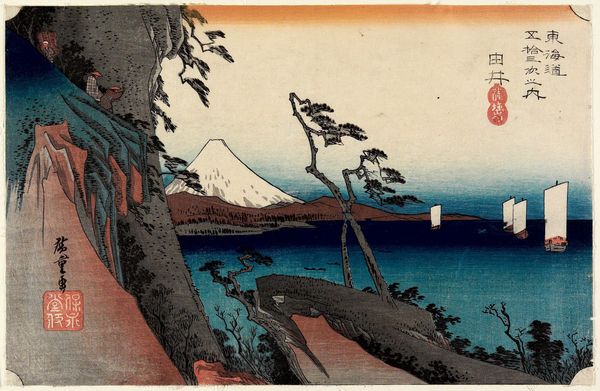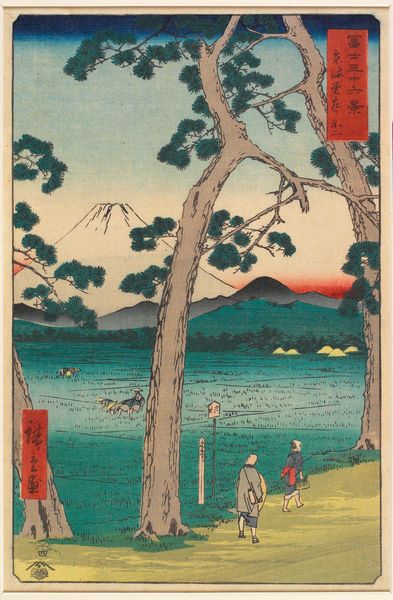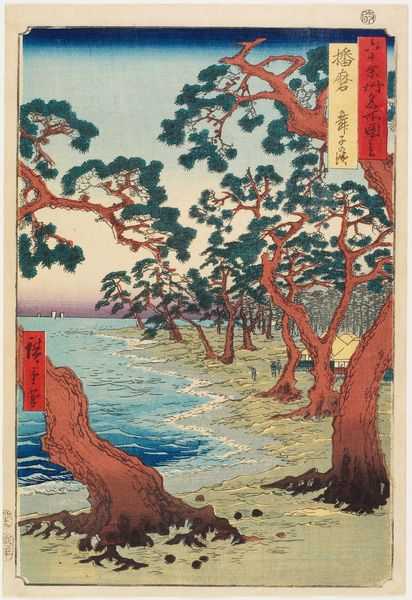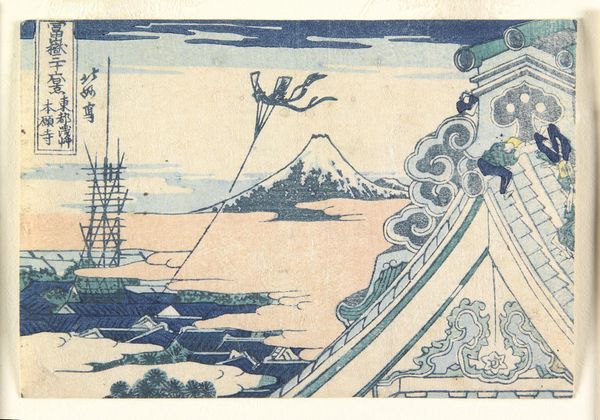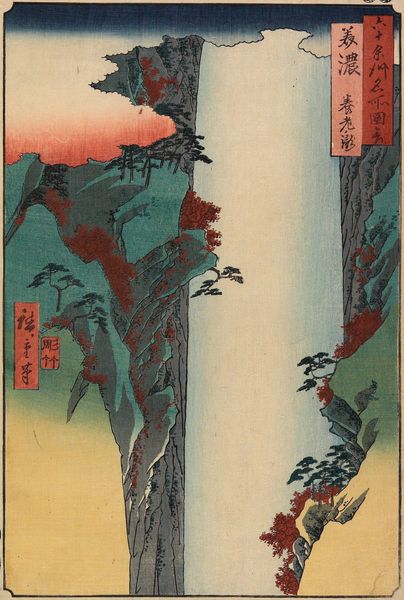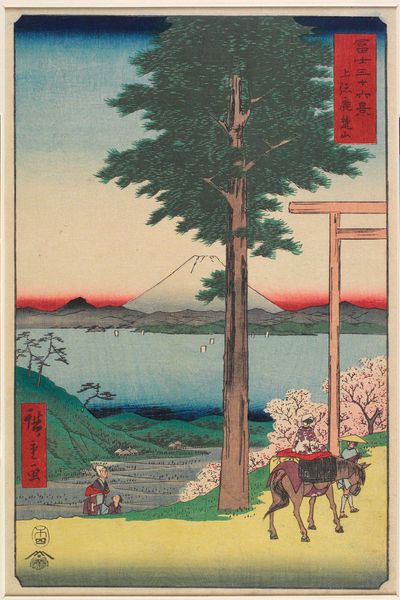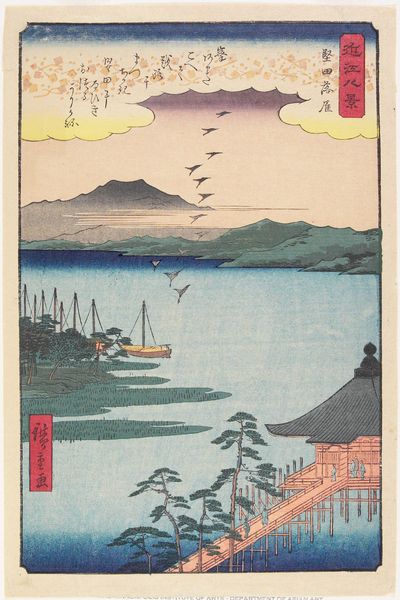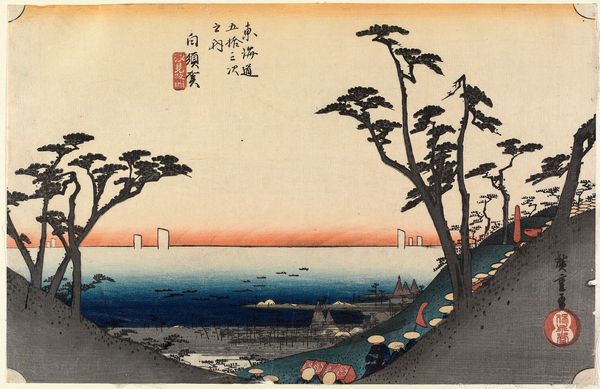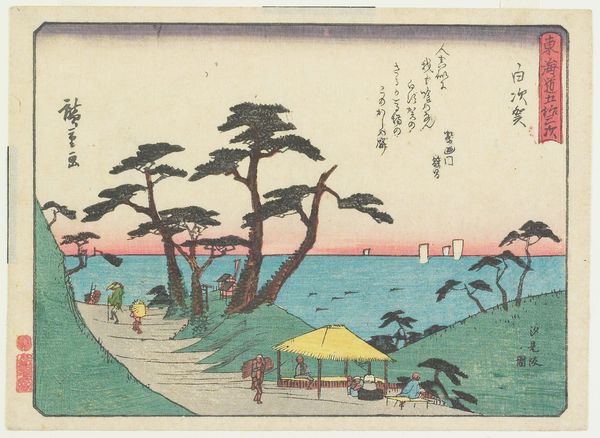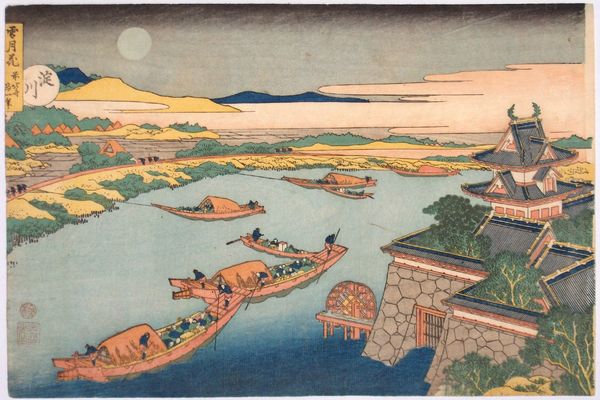
print, plein-air, ink, woodblock-print
#
water colours
# print
#
plein-air
#
asian-art
#
landscape
#
ukiyo-e
#
japan
#
ink
#
woodblock-print
Dimensions: 9 5/16 × 14 1/4 in. (23.7 × 36.2 cm) (sheet, horizontal ōban)
Copyright: Public Domain
Curator: I'm immediately struck by how dynamic the lines are within such a serene setting. The bent trees, the angled shoreline—there’s a constant interplay between diagonals and curves. Editor: You’ve picked up on something interesting. This woodblock print, created by Utagawa Hiroshige around 1832-1833, is titled "Yui". It is part of the series "Fifty-three Stations of the Tokaido Road," and it captures more than just a pretty view. Hiroshige made these prints to engage the masses during an unprecedented increase in travel, and each station offers a glimpse into the area’s character. Curator: I can see that. The way Hiroshige uses color to define depth is quite clever. The foreground, a kind of muted palette, shifts into the cooler blues of the water and then that subtle blush on Mount Fuji in the background. There is some beautiful control to his planes, which are neither entirely distinct, or blurred completely. It does a fantastic job of receding back into the landscape. Editor: Absolutely. Hiroshige wasn't just interested in representing physical space, but also the social and political dimensions of these locations. Think about it, this was a time when the Tokaido Road was not only a vital artery for commerce but also a space where different classes and cultures encountered one another. And Mt. Fuji often took on a larger role; an important symbol to local folk stories and religions. Curator: That makes me think about the figure almost camouflaged on the shoreline in the foreground. I wonder what someone would make of him, looking at this scene with contemporary eyes. Is that a lone wanderer, or part of a larger convoy? Does this speak to this intersectional social element that you pointed to? Editor: Exactly! We can ask these questions precisely because Hiroshige captured a world in transition. A society where landscape itself becomes a witness to change. The placement of people, the road, or in this case the cliff face they walk along...all reflect that transformative experience of 19th-century Japan. Curator: Fascinating how one visual encoding captures that! You have given me much to chew on regarding the political history on display through its visual elements, while my understanding of space helps further define how it all came to be. Editor: A print of time in Japan that remains with us! Thank you for walking us through these beautiful prints with us.
Comments
No comments
Be the first to comment and join the conversation on the ultimate creative platform.

